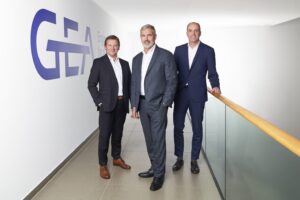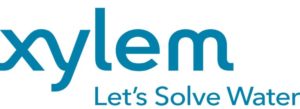CRANE CO. REPORTS FIRST QUARTER RESULTS
STAMFORD, CONNECTICUT Crane Co. (NYSE: CR) reported first quarter 2002 net income of $20.8 million, or $.35 per share, compared with $20.3 million, or $.33 per share, for the first quarter of 2001.
Operating profit
Operating profit for the first quarter of 2002 was $36.8 million on sales of $371.5 million compared with $37.3 million on sales of $379.3 million for the first quarter of 2001.
Operating profit for 2001 included a $6.1 million non-cash special charge ($.07 per share after tax) representing nonrecurring stock-based retirement costs of the Company's former Chief Executive Officer and $4.3 million of goodwill amortization ($.07 per share after tax).
Operating profit discussions throughout this release (except where indicated) compare the current year, which eliminates goodwill amortization as of January 1, 2002 upon adoption of mandatory new accounting requirements, to the prior year as reported which includes goodwill amortization. The initial transitional goodwill impairment test will be completed, as required, by the end of the second quarter and any impairment loss reflected as a change in accounting in 2002. A breakout of goodwill amortization by segment is available in the attached income statement data.
Order backlog at March 31, 2002 totaled $425.3 million declining $108.0 million, or 20.3%, from March 31, 2001 and declining 8.1% from December 31, 2001, reflective of the sharp decline in the commercial and general aviation markets and fulfillment of orders in 2001 for coin-changing and coin-validation equipment for the Euro conversion.
Segment Results
Sales and operating profit, excluding acquisitions and divestitures and a special charge in 2001, were down $42.8 million (12%) and $11.7 million (26%), respectively, versus the prior year level and continue to be impacted by extremely weak markets. Aerospace, our largest profit contributor, operated significantly below the prior year level as a result of the events of September 11. Engineered Materials saw improvement in its recreational vehicle (RV) market while its transportation and chemical process markets continued to operate at historically low levels. Merchandising Systems results were significantly below the prior year as a result of the completion of the Euro conversion at National Rejector (NRI) and continued weakness in the domestic automated merchandising industry. Fluid Handling benefited from the 2001 cost reduction initiatives while its short-cycle distribution businesses remained weak.
Aerospace sales of $82.5 million were $16.9 million, or 17%, lower for the first quarter of 2002 compared with the first quarter of 2001. Operating profit of $15.4 million decreased $9.1 million, or 37%, in the first quarter of 2002 while margins declined to 18.6% from 24.6% for the comparable period last year. These results were principally due to a 27% decline in high-margin aftermarket spares shipments coupled with reduced shipments to OEM customers in the commercial and general aviation markets. Shipments exceeded new orders by $24.0 million as the backlog declined to $226.3 million from $250.3 million at December 31, 2001. Aerospace orders remain weak. Although Aerospace orders improved 8% from the weak fourth quarter 2001 levels, they were 45% below the first quarter of 2001. While evidence of a recovery in the airline industry has been reported, we have yet to see the improvement in our order book. This business continues to invest in new product development focused on safety and reduced cost of ownership for airlines, while continuing to exercise strict cost control and to size its workforce to current business conditions. Management continues to expect an operating profit decline of approximately 30% for 2002 (excluding goodwill amortization from both periods).
Engineered Materials sales of $67.1 million decreased $9.6 million, or 12%, for the first quarter of 2002 compared with the first quarter of 2001 primarily due to the absence of $9 million of sales from the Canadian plumbing business, which was sold in the third quarter of 2001. Segment operating profit increased $2.6 million, or 31%, to $11.0 million in the first quarter of 2002 versus $8.4 million in the first quarter of 2001, and margins improved to 16.4% compared to 11.0% for last year's first quarter. This improvement was driven by Kemlite's increased shipments to the RV market, cost reduction initiatives and the absence of losses from the plumbing business. Partly offsetting these favorable impacts were reduced profits at Resistoflex reflecting continued weakness in the chemical process industry. The favorable comparison also reflects $1.6 million of goodwill amortization in the first quarter of 2001. Order backlog at March 31, 2002 was $19.8 million, an increase of $1.2 million, or 6%, from March 31, 2001 and an increase of $4.7 million from December 31, 2001 reflecting strong performance of the Company's products in the RV marketplace. Management continues to expect operating results for 2002 to remain flat (excluding goodwill amortization from both periods) as improvements from the RV market are expected to offset the impacts from depressed transportation and chemical process markets.
Merchandising Systems sales of $43.0 million were $14.7 million, or 26%, lower for the first quarter of 2002 compared with the first quarter of 2001. Segment operating profit was $4.4 million, a 50% decline from prior year, because of sharply lower sales at NRI reflecting the completion of the Euro conversion. Operating profit margins were 10.2% in the first quarter of 2002 compared with 15.3% in the first quarter of 2001 as a result of lower volume. National Vendors returned to profitability in the first quarter on sales which were 17% below the prior year level, as a result of strong cost containment efforts. This business continued to strengthen its management team and invest in new products during the quarter. NRI was solidly profitable as it continued to resize its business in line with the anticipated lower sales. Order backlog at March 31, 2002 was $22.3 million which decreased $55.4 million from March 31, 2001 a result of the completion of the Euro conversion. Management continues to expect operating results to be 50% to 60% lower for 2002 (excluding goodwill amortization from both periods). This decline reflects the completion of the Euro conversion in 2001 somewhat offset by slight improvement in the domestic automated merchandising market in 2002.
Fluid Handling sales of $163.1 million increased $46.7 million, or 40%, for the first quarter of 2002 compared with the first quarter of 2001. Operating profit increased $5.2 million ($4.3 million excluding goodwill amortization in 2001) to $12.2 million in the first quarter of 2002 versus $7.0 million in the first quarter of 2001. Excluding acquisitions, sales were down 6% but operating profits increased. Operating profit margins were favorable at 7.5% in the first quarter of 2002 compared with 6.8% (excluding goodwill amortization) in the comparable prior year period. Crane's valve business sales totaled $114.5 million, an increase of $51.7 million, due to acquisitions. Excluding acquisitions, valve sales were down 2% as higher shipments to the power and marine markets were more than offset by lower sales in Crane's short-cycle distribution businesses. Valve operating profit showed strong improvement (excluding acquisitions and goodwill amortization in 2001) on the lower revenues as a result of improved operating efficiencies. Sales in our short-cycle pump business were down 18%, generating margins in the 7% range. Crane Supply sales were up slightly from the prior year level with improved margins reflecting management's continued focus on optimizing product profitability. Order backlog at March 31, 2002 was $138.5 million, an increase of $36.6 million, or 36%, from March 31, 2001 reflecting the addition of Xomox and Crane Process Flow Technologies. Operating results for 2002 are expected to improve significantly from 2001 due to margin improvement initiatives, the full year impact of 2001 acquisitions and strong order backlog in power generation and marine markets (excluding goodwill amortization from both periods).
Controls sales of $15.9 million decreased $13.9 million, or 47%, for the first quarter of 2002 compared with the first quarter of 2001. The decrease was largely due to the absence of Ferguson, which now as a joint venture is recorded under the equity method of accounting by which Crane's share of profits is included in the miscellaneous-net line of the income statement, and the absence of Powers Process Controls which was sold in September 2001. Operating profit increased $.8 million in the first quarter of 2002 compared to the first quarter of 2001 primarily due to the exclusion of Ferguson in segment results, as noted above, which operated at a loss in the first quarter of last year. Operating results for 2002 are expected to increase over 2001 (excluding goodwill amortization from both periods) reflecting the elimination of $2.1 million of losses in 2002 incurred under the prior Ferguson business model in 2001 and stable 2002 results at the remaining businesses.
Financial Position
Crane's financial position remains strong. Net debt to capital was 28.9% at March 31, 2002 compared with 30.3% at December 31, 2001. Operating activities generated $27.1 million in cash flow for the first quarter of 2002. The Company re-deployed these resources by investing $6 million in capital equipment, distributing a $6 million dividend to shareholders and reducing borrowings.
Outlook for 2nd quarter of 2002 and Year 2002
We expect moderate improvement in quarterly results as the year progresses with second quarter earnings in the range of $.40 to $.42 per share. Consistent with previous guidance, we expect earnings of approximately $1.60 to $1.70 per share for the year 2002. Free cash flow (cash from operating activities less dividends and capital expenditures) is expected to total approximately $120 million or $2.00 per share in 2002. The Company plans to continue its focus on the efficient utilization of capital and remains positioned to take advantage of strategic acquisition opportunities.
Source: Crane Co.





